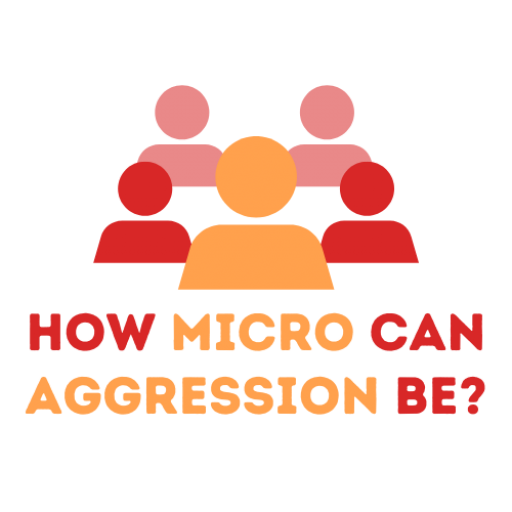Topic 2 Aspect I – Forms of Micro-aggression
‘Every day, casual and/or subtle remarks, questions, actions or environmental factors’
Maybe the most important thing that sets micro aggression apart from other types of aggression, is that it’s ‘small’, subtle, even casual. It could be a minor change in you facial expression, an automatic act or a sentence that you didn’t even think twice about saying, but do have a forceful attacking (aggressive) impact on the person on the other side.
Aggression in general can present itself in different forms. For example, you can be physically aggressive by punching someone, but you can also be verbally aggressive by threatening or name calling. The same goes for micro aggression, as we can see in the definition. There are roughly three forms in which micro aggression can present itself:
- Communicational (either verbal or non-verbal); meaning you say something verbally or communicate something in a non-verbal way (e.g. with facial expressions or hand movements)
- Behavioral; meaning you act in a certain way without necessarily wanting to communicate to other people
- Environmental; meaning someway the external environment or space is shaped or formed
To illustrate this, take a look at different examples for the different forms from our catalogue for each form of micro aggression.
Stating that it is weird to see a male nurse at the hospital is a communicational form of micro aggression because you communicate something to that person, with the underlying message that men are not or should not be able to be doing this kind of jobs.
This is based on the underlying prejudice that gender roles are restrictive when it comes to your vocation. Another example of a communicational but more non-verbal micro-aggression is eye-rolling or generally not paying attention when female colleagues contribute something to a business meeting. The underlying prejudice being an assumption of incompetence based on gender.
Behavioral forms of micro aggression differ from communicational because the micro aggressive person does not wish to communicate something to the other person, however, by behaving in a certain noticeable way, the person still does. For example, a store manager following around a person of color in a store might sends across the message that this person of color cannot be trusted, based on an assumption of criminality. It may not have been the intention to let the person of color notice, but the behavior itself is of course very noticeable and still sends a message across.
Lastly, an office building explicitly only accommodating for female and male toilets, is an example of environmental micro aggression. It conveys the message that people who do not identify as either male of female either do not exist or are not important, based on the underlying prejudice that gender is limited to two options only. In the case of environmental micro aggressions there is not one specific person in one specific moment the cause of the micro aggression, rather, it happens on a more institutional level.
Which brings us to the point that, apart from the different forms, micro aggression also presents itself at different levels. The most obvious level is that an individual can be micro aggressive towards another individual in one-on-one encounters. Communicational and behavioral micro aggressions are mostly on this individual level.
But on another level, also institutions and society can be micro aggressive. These are the environmental micro aggressions. If we look at the example of the toilets in a building, there is no specific individual responsible for this situation.
Naturally, micro aggression on an individual level requires a different response and solution as micro aggression on a more institutional level.
